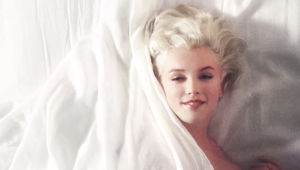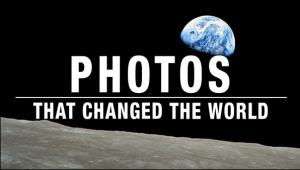For a Few Dollars Less: Photojournalists Risk Their Lives and the Pay Grows Smaller

In just two weeks on August 30th, Visa Pour L’Image, the international festival of photojournalism kicks off in the Southern French city of Perpignan. In its 26th year the festival is both a celebration of photojournalism and an homage to the photojournalists who have died in the last 12 months.
Earlier this year on May 15th, members of the media gathered on a gray Paris afternoon to hear Jean-François Leroy, the director of Visa Pour L’Image announce the program for the 2014 festival. The somber weather suited the dark mood of the gathering. News had just been received that 26-year-old Camille Lepage, a brilliant, up-and-coming photojournalist, had been assassinated in the Central African Republic; her bullet ridden body left in her car by the side of a road.
For Jean-François Leroy, Lepage’s death was another loss to add to an already long list of murdered photojournalists. At the press conference he seemed tired and worn and when he spoke, it wasn’t about the festival or even the death of so many journalists but rather he addressed the larger issue of photojournalism’s future.
He called his presentation, “If Only I Were Dreaming” and it is reproduced below in full with Jean-François’ kind permission.
“A few days ago I was having dinner with a photographer I’ve known for around thirty years, and who has done everything in the course of his career,” Leroy said. “He has covered wars and conflicts, and taken incredible risks; he is a person of great talent, and has also done whatever he was asked to cover, whether fashion or politics, red carpet or stock photos, not to mention some excellent magazine feature reports. In other words, he’s a heavyweight in the photography business.
He worked for thirty years, then one day, as has been the case for so many others, he was out of a job. It was crisis time for press agencies, there were fewer assignments: the same old story, the same sad story we have now been hearing for years. So our friend was relying, and rightly so, on the prospect of making a reasonable living from publishing the pictures in his archives. Such naivety! He hadn’t even given a thought to the system of flat rate payments. For those of you who may not be acquainted with this, it is a system of subscription arrangements that are designed and offered in response to demand, often insistent demand, from newspapers and press groups: ‘Take 10, 15 or 20 photos a day, and you’ll be earn a flat rate of 1000, 2000 or 5000 euros ($1370, $2540 and $6850) a month’ they tell us.
So our experienced professional photographer had received his first statement for the previous month, and the payment was just under 195 euros! ($268). One news magazine publishing Arab Spring reports had been paying 58 eurocents a photo. How much was his photo of the Berlin Wall coming down? Just 88 euro cents (about $1). And so it went on.
The photographer is furious! Who wouldn’t be? ‘My photos aren’t even worth the price of a condom!’ he said.
If only I’d been dreaming, if only this story had been a nightmare, then I could have told the tale and laughed. Alas, it is a true story, and, unfortunately, a common occurrence.
If photographs continue to be sold in bulk, photography will be killed off. If 25 years of archives are not worth more than 200€ ($275) a month, then the prospects for professional photography are grim indeed. It is about time all the players involved in the market for quality pictures, whether producing, distributing or buying them, realized that when they give in to extravagant demands from the parties with the money, they are digging the grave to bury photography as a profession. If there are no more photographs produced today, what will there be in the archives of the future?”
(Caption for image at the top of this story: Jean-François Leroy at the press conference. Photo courtesy of JF Leroy and Visa Pour l'Image.)
To learn more about Visa Pour l’Image go to http://www.visapourlimage.com/

















































